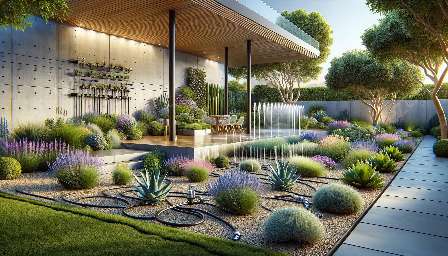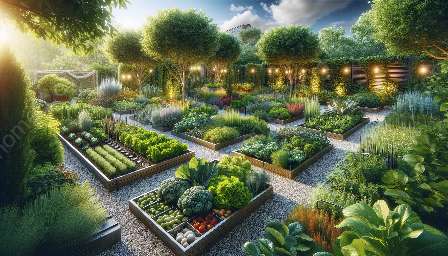Xeriscaping is a landscaping and gardening technique that focuses on water conservation, sustainability, and environmental responsibility. It is a practical and environmentally friendly approach that is becoming increasingly popular in many regions where water resources are limited or subject to conservation efforts.
Principles of Xeriscaping
Xeriscaping operates on several key principles that guide the design and maintenance of landscapes:
- Water Conservation: Xeriscaping aims to minimize water usage by incorporating drought-tolerant plants and efficient irrigation systems while reducing water loss through evaporation and runoff.
- Soil Improvement: The success of xeriscaping relies on healthy soil that can retain moisture and nutrients, often achieved through the use of organic matter and mulching.
- Appropriate Plant Selection: Xeriscaping emphasizes the use of native or adapted plants that require minimal water and maintenance, taking into account the local climate and soil conditions.
- Efficient Irrigation: Xeriscaping promotes the use of water-smart irrigation methods such as drip systems, soaker hoses, and rainwater harvesting to deliver water directly to plant roots with minimal waste.
- Mulching and Ground Cover: Mulch is utilized to minimize water evaporation, control weeds, regulate soil temperature, and improve overall soil health.
- Maintenance Practices: Xeriscaping encourages practices such as proper pruning, strategic lawn mowing, and efficient water management to ensure sustainable and attractive landscapes.
Benefits of Xeriscaping
Implementing xeriscaping offers various benefits to homeowners, communities, and the environment:
- Water Savings: Xeriscaping can reduce water usage for landscaping by 50-75%, resulting in significant cost savings and contributing to conservation efforts.
- Low Maintenance: By using drought-resistant plants and implementing water-efficient practices, xeriscaped landscapes require less time, effort, and resources for upkeep compared to traditional lawns and gardens.
- Environmentally Friendly: Xeriscaping minimizes the need for chemical inputs and reduces pollution from lawn maintenance equipment, promoting environmental sustainability and biodiversity.
- Enhanced Property Value: Well-designed xeriscaped properties are attractive to potential buyers and can increase the overall value and curb appeal of homes and commercial spaces.
- Assess Your Site: Understand the local climate, soil type, sunlight exposure, and water availability to select suitable plants and design an efficient irrigation system.
- Choose Native and Adapted Plants: Select plant species that are well-suited to the natural conditions of your area, and pay attention to their water requirements and maintenance needs.
- Group Plants by Water Needs: Create hydrozones in your landscape, grouping plants with similar water requirements together to optimize irrigation and minimize waste.
- Optimize Irrigation: Install water-efficient irrigation systems that deliver moisture directly to plant roots and adjust watering schedules based on seasonal weather patterns.
- Maximize Mulching: Use organic mulch to cover soil surfaces, suppress weeds, retain moisture, and protect plant roots from temperature fluctuations.
- Embrace Sustainable Practices: Utilize composting, rainwater harvesting, and natural pest control methods to minimize environmental impact and support the health of your xeriscaped garden.
Practical Tips for Xeriscaping
Whether you are starting a new landscape project or looking to transform your existing garden, consider these practical tips for successful xeriscaping:


































